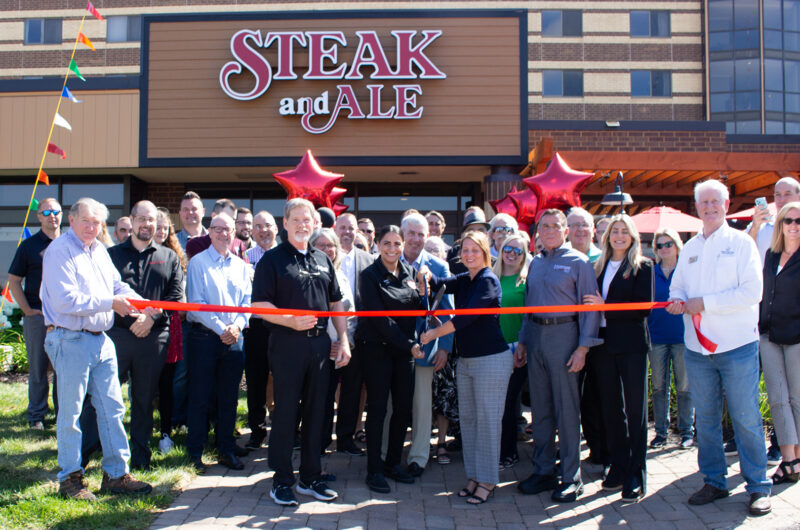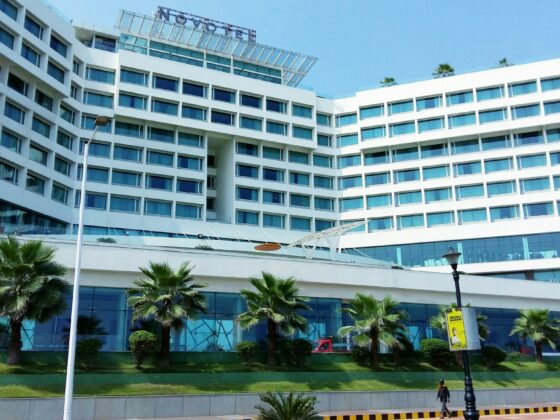Damola Adamolekun, an executive with an Ivy League pedigree and a track record of restaurant turnarounds, has been entrusted with breathing new life into a beloved brand that has just emerged from Chapter Eleven. After steering P.F. Chang’s through a pandemic and returning it to profitability, he now brings fresh vision and youthful energy to an iconic name.
From Springfield to the C Suite
Adamolekun was born in Nigeria and spent parts of his childhood in Zimbabwe and the Netherlands before his family settled in Springfield, Illinois. At Brown University he studied economics and political science, led the student investment group and played Ivy League football, then earned an M.B.A. from Harvard Business School. His finance career began at Goldman Sachs and TPG; at Paulson & Co. he pitched the idea to acquire P.F. Chang’s and later became its chief strategy officer and, at thirty one, its first Black CEO.
During his tenure at P.F. Chang’s, the company launched the “To Go” format, weathered pandemic lockdowns and returned to annual revenues of about one billion dollars. His reputation for operational discipline and innovation caught the attention of Fortress Investment Group when it acquired Red Lobster’s parent company earlier this year.
The Undercover Interview
Unlike many executives who accept a turnaround job sight unseen, Adamolekun secretly visited multiple Red Lobster restaurants as a regular guest before agreeing to lead the company. He sampled crab legs and Cheddar Bay biscuits, chatted with servers and diners, and listened to what the brand’s loyal customers wanted. His takeaway: people crave quality seafood in comfortable surroundings that honor the chain’s heritage.
He was also candid about the mistakes that pushed Red Lobster into bankruptcy. The chain’s permanent “endless shrimp” promotion generated heavy traffic but contributed to eleven million dollars in losses. Adamolekun vows that the promotion will never return; as he told Fortune, “I know how to do math”.
Why this young CEO is a game changer
Appointing a leader in his mid thirties signals that Red Lobster believes fresh vision and energy will ignite its comeback. Adamolekun has already proven he can revitalise a legacy chain under extreme pressure. His youth may help Red Lobster connect with a new generation of diners while his operational experience reassures long time fans. Fortress is also committing more than sixty million dollars to refurbish locations, upgrade technology and repair deferred maintenance, so he will have the resources to execute his plan.
Most importantly, Adamolekun views the turnaround as an opportunity to honour a pioneer of casual dining. “Red Lobster was the first really successful casual dining chain in America at scale,” he has said. That blend of respect for tradition and hunger for innovation mirrors the generational shift happening across hospitality. He may be newer to running an organisation of this size, and food and labour costs are high, but if he manages the cost of goods, labour and marketing with the same precision he used at P.F. Chang’s, this could be a genuine game changer for the brand.
His Turnaround Playbook
- Incremental improvements rather than radical change. Instead of ripping out the menu, he will focus on tightening operations, simplifying offerings and eliminating underperforming items.
- Operational upgrades including new lighting, music and décor, repairs to HVAC systems and carpets, and targeted renovations to infuse energy into existing restaurants.
- Value and accessibility. He wants to lower the average check so that families view Red Lobster as the best value for quality seafood.
- Investment in people. With more than thirty thousand team members, he plans to cultivate a culture that blends hospitality with disciplined execution, drawing on his experience at P.F. Chang’s.
- Real estate rationalisation. The company closed nearly a hundred underperforming units during bankruptcy. A leaner footprint allows management to concentrate resources where they matter most.
What success would mean
Red Lobster expects to achieve positive net income by fiscal 2026 and boost adjusted EBITDA by forty three percent between 2025 and 2027. Adamolekun calls his mission “the greatest comeback in the history of the restaurant industry”. Ambitious goals are welcome; after all, big dreams fuel progress.
What inspires me is the broader lesson: age is not the sole arbiter of leadership. Vision, resilience and empathy matter more. With a young and hungry CEO at the helm, Red Lobster has a chance to prove that the next generation can steward a heritage brand with care and creativity. In a landscape where heritage brands either evolve or perish, this story could become a textbook example of how youthful leadership can spark a comeback.
Your turn
What excites you most about a fresh generation leading an iconic hospitality brand? Where do you see opportunities for innovation while staying true to what diners love about Red Lobster? I welcome your positive energy and ideas in the comments.
Robert Marchetti
CEO RM Hospitality.








